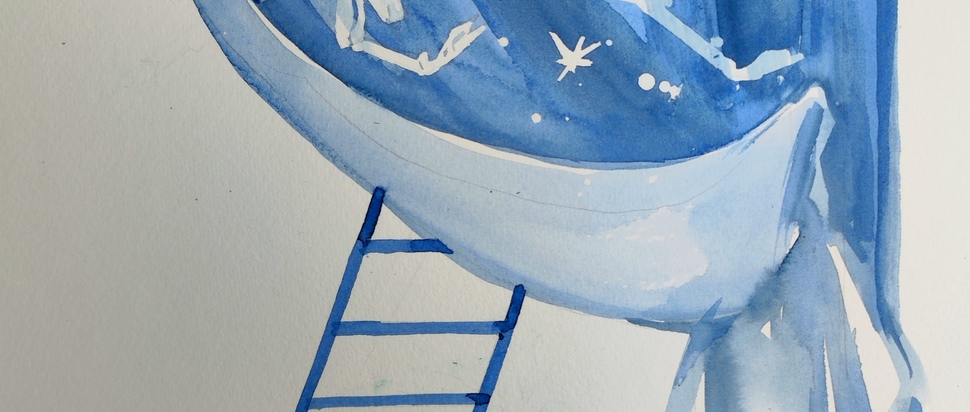Iranian storyteller Zahra Afsah on The Voice Shall Always Remain
Ahead of the Scottish International Storytelling Festival, we chat with Iranian storyteller Zahra Afsah, whose collaboration with Syrian storyteller Khloud Ereksousi explores the possibility of female revolution
In collaboration with Syrian storyteller Khloud Ereksousi and director Jackie Ross, Iranian storyteller Zahra Afsah invites audiences into Iranian stories from different millennia – each story constructs women's bodies as potential sites of power and revolution.
The Skinny: To start, could you tell me a little bit about the piece?
Zahra Afsah: The piece is called The Voice Shall Always Remain, which comes from one of our very famous female Persian poets, Forugh Farrokhzad. It circles around the notion of how people and stories come and go but the voice of certain characters throughout the story will always remain. The story I share is made of three different stories. Story number one comes from the Shahnameh – The Book of Kings – by the Persian poet Ferdowsi. The next is from another Persian poet Nizami; he basically retells the same story in another context, but then takes it into another domain. The value of women in his stories is portrayed differently. I move from that into what happened in Iran a year ago with the death of Mahsa Amini. I begin repeating the slogan Woman Life Freedom, Zan Zendegi Azadi, Jin Jiyan Azadi, and I begin telling her story. I speak about how her death united the women of Iran: how they came out, how they shouted for her right to be a human, a woman, to dance, to free her hair in the air, to speak her mind. The beautiful Syrian storyteller Khloud [Ereksousi] will tell us about this slogan from her point of view. This slogan actually started before it was used for Mahsa Amini's death. It was used by Syrian Kurdish women some years ago, and it never died.
And what role does the storytelling technique pardeh khani play?
In old Persia, around the 18th century, people used to gather together in tea houses and coffee houses [and] storytellers would come in, usually carrying a piece of [painted] cloth with them. And the storyteller would begin telling the story behind the image and moving in and out of the painting. Mehdi Farhadian, who is a very well-known painter in Iran, has painted these three different stories together [on a curtain] as it was used in the past, one layer of story on top of the others.
I'm really fascinated by the role of textiles. You have the pardeh, garments, hijab all flowing through the paratext and the text of this piece. I love the way that you say that the storyteller leads the audience in and out of the painting.
Yes, it's quite magical. The introduction of pardeh khani, the whole question of the hijab, how women are covered in Iran... somehow, metaphorically, they are intertwined. I am reading the curtain, and I am revealing the story behind the curtain. And the women of Iran, they also came out to the streets and they started burning their hijabs and cutting their hair because they wanted to show more; they wanted to show what is behind the curtain, behind their hijab, behind what is covering them on the surface. This particular story has been told by Persian poets over and over again, and I always wondered: "Why this story?" Because we are not short of stories – why [was] this story carved and woven and hammered onto metalworks, into carpets? There is a message; the voice of women needs to be heard.
What can liberatory movements take away from this piece, this technique, and these stories?
In the second story, something magical happens. A girl goes through a lot of suffering, and she uses her wisdom to teach the king a lesson, and the king listens to her and actually asks for her pardon, which doesn't happen in the first story, and obviously it doesn't happen in Mahsa's story. But the women of Iran have [always] been using their bodies and their voices – this whole act of cutting their hair is a political, theatrical way of showing resistance. And I think women have been doing that throughout history; we needed to use our creativity [and] our skills to show our voices.
That is an incredibly powerful sentiment. How has it been staging this work in Scotland, and is there a type of audience that you hope this work reaches here?
I am hoping that the messages of the stories come across, because some of these stories for Iranians are very familiar. For the non-Iranian audience it can be a bit complex, because it's also very metaphorical. I have tried hard not to overcrowd the stories with too much metaphor, because the first and second stories are in the form of poetry and full of allegories. I hope that it brings something new but also connects [audiences] with the art of storytelling in general. I am quite certain that these stories are all very much connected and I am sure there are connections that [everyone] can feel. I hope so.
